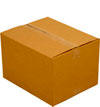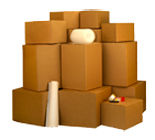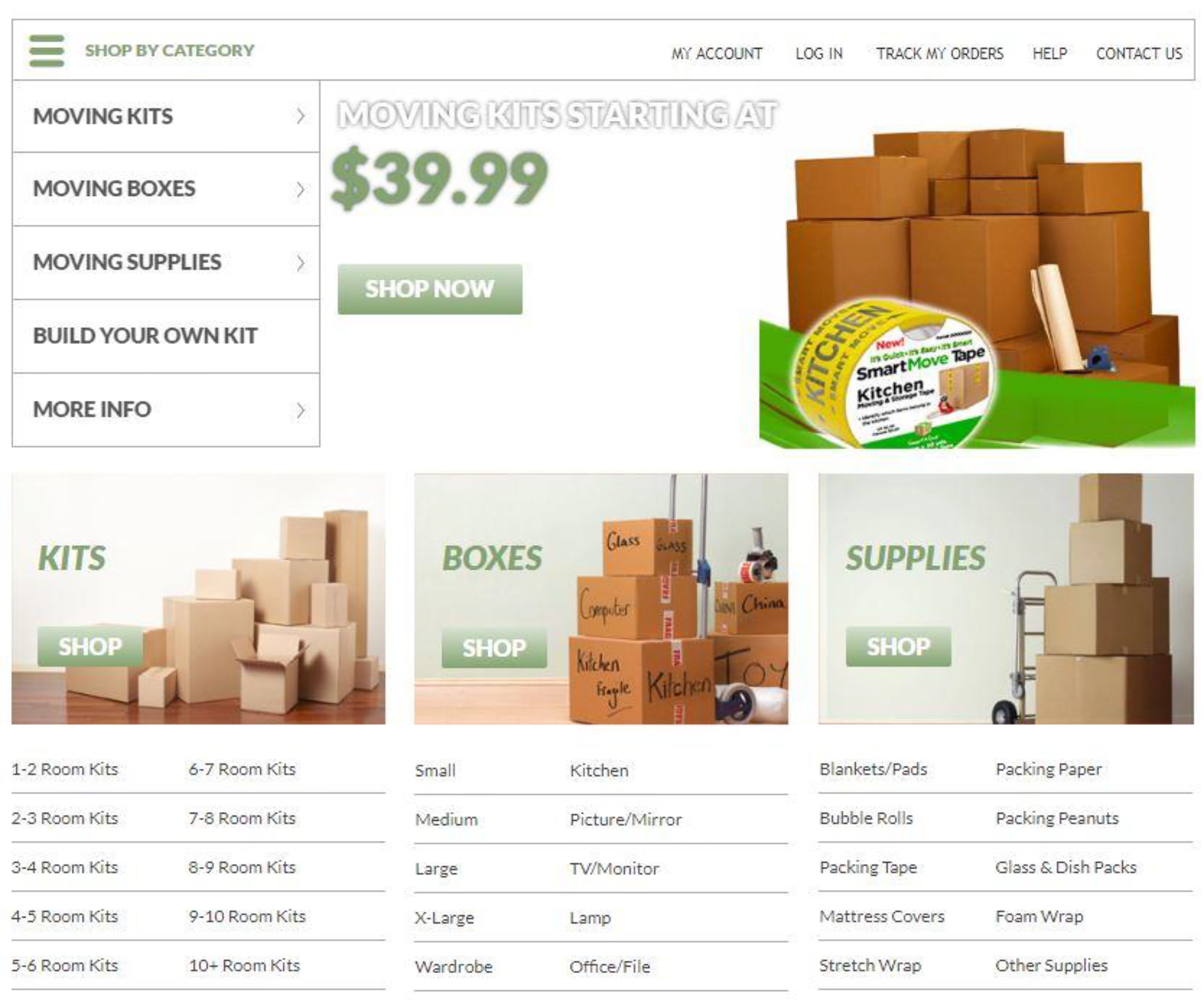Moving Supplies
"Great Deals"
More Bubble
More Bubble for the Money
Tape with Dispensor
For Easy Use
"Great Deals"
Moving Box Bundles
Click here to add text.
WashingtonBoxes.com
We stock dozens of different sizes of moving boxes and they are all strong, rated at least the industry standard 32 Edge Crush Test with a 200 lb Test Strength and packaged inside a protective reusable box. Whether you need small moving boxes for your books or canned goods, or large and extra large moving boxes for your light and bulky items like pillows, toys, and bedding, or if you just need a bunch of medium moving box bundles for the bulk of your moving WashingtonBoxes.com has it.
Additionally, we have several specialty boxes like Wardrobe boxes for your hanging clothes, Kitchen boxes for your Dishes, and Mirror and Picture Boxes for your Wall items.
Each kit includes an assortment of moving boxes and moving supplies like bubble wrap, packing tape, packing paper and more. As you look around you’ll see our moving kit packages are categorized by the number of rooms you’re moving. For example 1 room moving kits, 2 room moving kits, etc - all the way up to 10 room moving kits.
Additionally, each room kit has three package choices – Standard Kits, Bigger Boxes Kit, and Wardrobe Kits.
If you would like to have more freedom in choosing your moving supplies then we have a full line of Packing supplies. Packing Paper, Packing Peanuts, Foam Wrap, and Bubble wrap all help with your packing and are used on the inside of a package to help prevent damage during shipment.
Bubble Wrap comes in three different bubble sizes and two different lengths and is used to pad and cushion the contents of a box. Peanuts are used to fill in the empty space so that the box contents do not shift during transport. Newsprint paper can be used to fill void in boxes or protect your valuables from scratching and such. Finally, Foam wrap is primarily used to provide surface protection.
Other moving supplies include Glass & Dish pack kits, Stretch Wrap, Packing Tape, and Dust Covers, and Moving blankets and Furniture pads.
Glass and Dish pack kits are cardboard dividers that are inserted into your moving boxes to make cells to store your glass and dishes. They come with foam sleeves to provide extra protection. Stretch Wrap comes in different sizes and lengths and is primarily used to secure your items once they are packed in your moving van. If you haven’t used stretch wrap for a move, you’re missing out on one of the most protective, easy to use moving supplies available today We carry standard size stretch wrap, as well as a large size for furniture and extra wide items that are not boxed.
If you need packing tape for you move, WashingtonBoxes.com has exactly what you need. We carry heavy duty tape guns and tape refill rolls. A packing tape dispenser is one of the most valuable supplies that can make moving easier on you. So you can choose from tape gun dispensers or clam dispensers to apply your tape.
Another must have moving supply are Dust Covers. The plastic covers are used to protect your mattresses, sofas, tables, chairs, and other furniture. Just slip on and you are done. Furniture pads are another way of protecting your furniture when moving. This is kind of like packing paper but larger and with multiple layers.
Finally, moving blankets are extremely important because it protects items once they are loaded into your moving truck. The blankets that we offer are the ones used by the professionals so they provide great protection.
It is so very important that your belongings arrive in the same condition that you packed them in. There is nothing more disheartening to buy a new home, pack up your stuff, and find out that your grandmother’s china broke. That really takes the fun out of your new home. On the other hand moving day can be a blast if after you arrive everything is safe and sound. In fact it’s almost like Christmas!
How to have a worry free move.
1. Write everything down! You'll thank yourself later. Before you pack even one box, create a simple record keeping system with a printed list of numbers and a space to write the contents. Or have a spiral-bound notebook for the job. You'll place a number on every moving box you pack and list the contents on our list. Mark each packing box with its contents and destination room.
2. Develop a master “to do” list so you won't forget something critical.
3. Sort and get rid of things you no longer want or need. Have a garage sale, donate to a charity, or recycle.
4. Don't throw out everything. If your inclination is to just toss it, ask yourself how frequently you use an item and how you'd feel if you no longer had it.
5. Pack like items together. Put toys with toys, kitchen utensils with kitchen utensils.
6. Decide what if anything you plan to move yourself. Precious items, such as family photos, valuable breakables, or must-haves during the move, should probably stay with you.
7. Use the right moving box for the item. Loose items encourage breakage so use the right packing supplies.
8. Put heavy items in small moving boxes so they're easier to lift. Keep weight under 50 lbs. if possible.
9. Don't over-pack your boxes this will increase the chances they will break, and make sure they are at least 32ect strength.
10. Additionally, be sure to use the correct moving supplies such as bubble wrap, packing paper, foam, and furniture pads. All fragile items should be packed and wrapped separately. Also, pad the bottom and sides of boxes with wrapping paper or bubble wrap.
11. Label every box on all sides. You never know how they'll be stacked and you don't want to have to move other boxes aside to find out what's there.
12. Keep your moving documents together, including phone numbers, driver's name, and van number. Also keep your address book handy.
13. Back up your computer files before moving your computer.
14. Inspect each box and all furniture for damage as soon as it arrives.
15. Remember, most movers won't take plants.
Moving Checklist
Two Months Prior to Moving Day
If you use a mover, get 2-3 estimates from moving companies you can trust. Such as the The American Alliance of Ethical Movers
If you move yourself, get costs from a truck rental company
Create a floor plan of your new home for furniture and appliance placement
Make an inventory of your household goods and begin to remove clutter (start with the basement, attic, garage, and other storage areas).
Prepare to have a moving sale for your less valuable items, and have a net-auction for the more valuable ones – see QuikDrop.com
Prepare current house for sale – upgrade lighting, lawn and paint
Arrange to transfer school records.
Choose a mover from the quotes and reserve your moving and delivery dates.
Get your new home ready – Contact painters, carpenters, plumbers, roofers etc., so your home is ready when you arrive
Six weeks prior to Moving Day
Subscribe to the paper in your new hometown to learn more about your new community.
Make arrangements for storage if necessary.
Ask your doctor or health plan provider for referrals, and obtain all medical records.
Have antiques, pieces of art, and other valuables appraised.
Start using foods and cleaning supplies that cannot be moved.
Four weeks prior to Moving Day
Schedule disconnection of all utility services at your old home, and connection of them at your new one. Be sure to disconnect the day after you leave and connect the day before you arrive.
If you have “last month” deposits with services, such as the telephone company.
Change the locks on all the doors in your new home, if the new home is ready.
If you are moving yourself, reserve a rental truck for your selected moving day.
If you are packing yourself, obtain packing materials from WashingtonBoxes.com and start packing items you won’t need until after you arrive at your new house.
Arrange for cleaning and repair of furniture, drapes, and carpeting
Arrange for special transportation of your pets and plants if necessary.
Check with your insurance company to see how your possessions are covered during transit.
Make any travel plans necessary for your move.
Collect your important records-Gather personal and family records, including medical and dental, veterinary and school records; legal and financial documents; birth certificates, passports and insurance documents.
Three weeks prior to Moving Day
Hold your moving sale.
Properly dispose of items that cannot be moved, such as flammable liquids
Obtain and fill out post office change-of-address cards.
Prepare auto registration for transfer (if moving to another state).
Make child-care arrangements for moving day.
Two weeks prior to Moving Day
Arrange for donation or disposal of anything not sold at your moving sale
Service your car in preparation for the move. If you’re moving from a warm climate to a cold one, check your antifreeze.
Return any borrowed items (including library books) and retrieve any loaned items.
Cancel newspaper delivery.
Notify any creditors of your move.
Transfer prescriptions and be sure you have an adequate supply of medications on hand.
Assemble a file folder of information to leave for the new owner of your home.
Change your address. One week before you move, send change-of-address cards to everyone who will need to contact you.
Pack a travel kit: Put aside critical items like a checkbook, credit cards, personal phone book, ID, flashlight, keys, toiletries, paper plates, cups, towels, travel alarm clock, aspirin, bandages and games for the kids. Also, pack a suitcase with clothing and other personal items.
Order new checks. Have them ready with your new address by moving day
One day prior to Moving Day
Transfer your bank accounts.
Close and empty your safe-deposit box.
Settle any bills with local businesses.
Drain power equipment of oil and gas. Drain water hoses.
Find new homes for plants that will not be moved.
Confirm any travel reservations.
Defrost refrigerator & freezer, propping doors open.
Let movers pack your belongings (unless it’s a do-it-yourself move).
Disconnect and prepare major appliances for move.
Set aside anything that will travel in your car so it will not be loaded on the truck.
Pack a box of items that will be needed first at the new house. Clearly mark this box “load last."
Obtain certified check or traveler’s checks for the trip and to pay the movers.
Confirm arrival time of your moving van/truck.
If moving yourself, dismantle beds and other large furniture.
Moving Day
If using a mover, be sure someone is at the old house to answer questions.
Note all utility meter readings.
Read your bill of lading and inventory carefully before signing. Keep this paperwork in a safe place.
Delivery Day
-Again, be on hand at your new house to answer any questions.
Check your belongings carefully and note on the inventory paperwork any damaged items.
On an interstate move, be prepared to pay the driver before your possessions are unloaded.
Supervise unloading and unpacking.
Be prepared to pay your mover with certified check or traveler’s checks unless other arrangements have been made in advance.
With this last box checked, you’ll be ready to enjoy the fruits of your organization and your new home.
Copyright © 2009 WashingtonBoxes.com. All rights reserved.
WashingtonBoxes.com offers brand new boxes and supplies. We provide Free Same Day Shipping to Baltimore, Rockville, Gaithersburg, Silver Spring, Bethesda, Bowie, Burtonsville, College Park, Damascus and many other cities throughout Maryland.
Fast Delivery
Same Day Shipping
Free Shipping
No minimum order required
High Quality Boxes
Same Boxes as Mover Use
"SAMEDAY SHIPPING"
"FREE DELIVERY"
"Serving Washington & Metro Area"
Washington Moving Boxes and Supplies
washingtonBoxes.com
"Great Deals"
Moving Box Kits
Moving Supplies
"Great Deals"
Click Here
Click Here
Copyright © 2019 Washingtonboxes.com. All rights reserved







